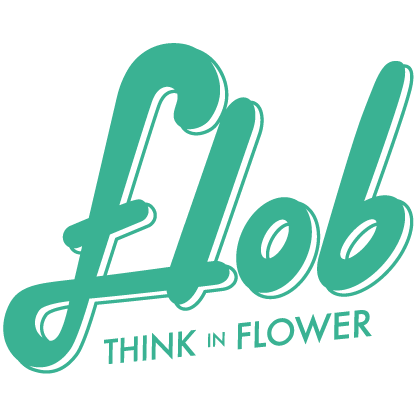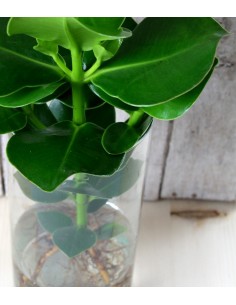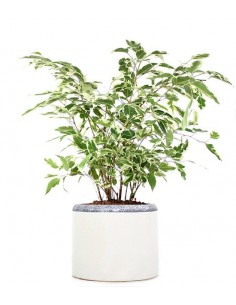- Home
- 11453 views
- 0 comments
We've already talked about hydroponics, or hydroculture, a cultivation technique that - despite being rediscovered already in the early twentieth century - in recent years is becoming increasingly used and integrated into different areas, not limiting its use to agricultural crops in large scale, but taking it into the urban context both public and private. Basically, hydroculture is a very efficient and effective means for anyone who loves plants and not just for those who work for them.
The reason why hydroponics is very well known even in domestic environments is due to the advantages it has and brings. First of all, the first advantage consists in one of the main aspects that characterizes it: the absence of soil. The plants grown using this method, in fact, absorb the nutrients they need - ie phosphorus, nitrogen, potassium and other elements - from the water where they are immersed only with roots. The replacement of the soil with water has as a positive consequence a management of the plant care much simpler, which for those who do not have the so-called green thumb, but loves to live in a house full of plants, is an excellent alternative. With hydroponics, in fact, there is the problem of watering, which if managed incorrectly, can be the cause of a possible drying or a botanical asphyxia.

Thanks to the presence of a substrate where the root system is immersed, the plant is able to feed without risking suffering. The substrate can be made of different materials and in hydroponics it is usual to be a product that can be used several times and recyclable when it is no longer useful to perform its function. One of the most used materials in hydroculture is expanded clay which, formed by heterogeneous balls, favors the drainage of water allowing the plant to breathe and avoiding water stagnation. At the same time, the clay acts as a fertilizer, thus completing the fundamental nutritive needs of the plant. Surely this is the most used substrate type because - compared to other materials such as rock wool and peat - thanks to its properties it is perfectly suited to hydroculture. Also, it may not be replaced for years, as long as the space of the pot for the plant remains sufficient to promote its well-being.
For this reason, expanded clay has been chosen for all hydroponics plants that you can find in our online store.
The second advantage that we can highlight is that the growth of plants grown with hydroculture is twice as fast as those grown in the ground, moreover they easily maintain a healthy appearance because it is not necessary the use of pesticides and there are very few possibilities that they can find illnesses. This is another aspect that encourages the ease of care and the economic convenience of hydroponics. In particular, the ease of care involves a third advantage, ie the fact that the plants need little attention, can be left without maintenance for a short period of time, for example when going on holiday.
The fourth, and last, advantage of apartment plants grown with hydroculture is the purely aesthetic and practical aspect. For all those who furnish their home using the use of plants, the vessels produced for this specific area of cultivation are rather decorative and beautiful.
So take a look at our dedicated catalog and let yourself be inspired by the evergreen beauty of the plants grown with hydroponics, as well as by the new design vases that you can easily integrate into your home furnishings!









Comments (0)